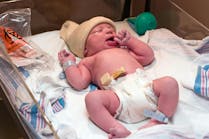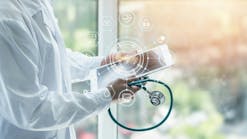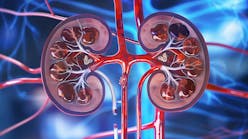Vincent J. O’Neill,
MD, MRCP Chief Medical Officer
Professional
I joined Exosome Diagnostics in June of 2013. Prior to that, I founded and headed the Personalized Medicine Group at Sanofi, where I worked for two years. Before this, I worked at Roche/Genentech for many years, leading the development of a number of new therapeutics with their associated biomarkers and companion diagnostics. So my expertise is a blend of translational science, therapeutics, and diagnostic product development.
Education
I attended the University of Glasgow, UK, where I obtained my BSc in Pathology, MBChB, and MD. In the UK an MD is a research degree, requiring a full-time lab commitment. In addition, I’m a Member of the Royal College of Physicians.
Personal
I enjoy cycling and hill walking, but my main interests are bookish: I read voraciously, typically modern literature, and try to maintain my long-time interest in Classical languages and culture.
If you were explaining Exosome Diagnostics to someone who is not familiar with the organization, how would you characterize its primary areas of expertise? What are the major categories of solutions that Exosome provides for its customers? The company was founded on the discovery that exosomes, small vesicles found in blood and other biofluids, contain abundant RNA, as well as DNA and protein, making them ideal for diagnostic purposes. Our expertise is therefore in the isolation and downstream analysis of the exosomes and their contents. To this end, we have two isolation platforms: one for isolation of RNA, which has applications in oncology and non-oncology areas, like neurodegenerative disease and cardiovascular disease; and one for simultaneous isolation of RNA and cfDNA, designed to maximize sensitivity for non-invasive genotyping, principally in oncology.
What would be a good thumbnail definition of “exosome biology”? Exosomes are packages of information used by cells for communication in both healthy and disease states. Therefore, analyzing their contents provides a real-time window into what’s happening in cells and their surrounding micro-environment, with very immediate diagnostic relevance.
Your company’s Solid Tumor Mutation Panel isolates both cell-free DNA and exosomal RNA. What are the advantages of this approach? This is quite revolutionary. Nucleic acid in biofluids comes from two sources: cfDNA from dying cells through cellular necrosis, and apoptosis; and exosomal RNA (plus some DNA) from living, dividing cells. Combining these two sources captures all of the available mutation signal, and so markedly increases the sensitivity of the assay. This is very relevant for rare mutation detection, where the mutations are infrequent (typically less than one percent) on a background of normal, wild-type genes.
How and where will that panel be launched, and what are the prospects for clinical laboratory applications in the future? We will launch two separate blood-based panels in the near future: a 26-gene panel of actionable mutations, with a turnaround time (TAT) of five working days; and a more comprehensive 88-gene panel, with a typical TAT of two to three weeks. The smaller, focused panel will be launched as a laboratory developed test (LDT) in our CLIA lab and will be available to pharmaceutical companies by the end of the year.
Exosome Diagnostics also has developed liquid biopsy tests for lung and prostate cancer, and you have lately published the results of research. What are current and future applications of these assays? We have developed and will launch as LDTs later this year two single gene blood-based assays in lung cancer, for ALK and T790M/EGFR; and a urine-based RNA signature that accurately rules out the presence of high-grade prostate cancer in men with an elevated prostate-specific antigen (PSA) prior to prostate biopsy. These single-gene assays have been developed to identify in blood driver mutations for which targeted therapies are available. Testing for these genes in patients with non-small cell lung cancer is already recommended in treatment guidelines in the United States. The urine-based assay, which is completely noninvasive and doesn’t require a digital rectal exam, has recently completed final clinical validation in a large cohort of patients, and was recently presented as a plenary session at the American Urology Association. Its application is primarily in avoiding unnecessary biopsies in men who would otherwise proceed to biopsy based on PSA, by accurately identifying those who are unlikely to have high-grade cancer.
Your company is active in companion diagnostics. How is this collaboration between diagnostics and pharmaceutical companies going to affect the clinical lab? Consistent with the personalized medicine mantra “the right drug for the right patient at the right time,” most oncology clinical trials today require patient stratification or selection based on a molecular marker(s); this stratification, however, is currently based on tissue diagnostics, often requiring a new tissue biopsy procedure. It’s acknowledged that this requirement reduces clinical trial accrual substantially, since many patients are unwilling to undergo such a procedure. The logical next step is to move to stratifying patients by liquid (e.g., blood) diagnostics, and to monitor patients for resistance mechanisms noninvasively. I think the testing paradigm for solid tumors is therefore changing, and beginning to look more like standard practice in heme-oncology. This is an
exciting time in oncology.
Before assuming your current position, you held research leadership positions at Sanofi, Genentech, and GlaxoSmithKline. How has your past work prepared you for your present responsibilities? My prior experience is a blend of therapeutics and biomarker/diagnostic development. Given the emphasis now on developing the right drug for the right patient, in other words the precision medicine paradigm, there is a very clear need for molecular, noninvasive, liquid-biopsy approaches to facilitate our understanding of the drug target and mechanisms of resistance to the drug. Exosome Diagnostics is at the forefront of this revolution in noninvasive testing. So ultimately I think my prior positions and experience are perfectly suited to the job at hand. With this experience, my ultimate focus is on creating smarter diagnostic and testing approaches that will advance healthcare and improve the lives of patients.
Exosome recently launched a new initiative called the A to D Program. What is the nature and purpose of this program? The Academic Bench to Diagnostic Assay Program, or A to D Program, is designed to utilize Exosome Diagnostics developmental and regulatory expertise to bring assays developed by academic and clinical researchers from the academic bench to the clinical diagnostics laboratory. Our A to D program will help provide the expertise needed to address the challenges of advancing tests into the clinic, including navigation of the regulatory approval process, assistance with reimbursement, and implementing a commercialization plan.





